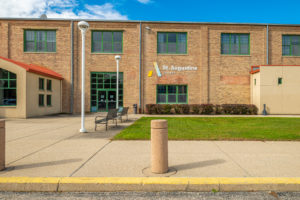Passing the NBRC RTT Exam

At the moment, the NBRC registered respiratory therapist exam is known as one of the hardest exams of all allied health fields. On average, about 61% of all candidates pass the exam. But there are plenty of tips and resources to help you pass the respiratory therapist exam, and start out a promising career as a respiratory therapist.
How Does the NBRC RTT Exam Work?
The scoring of the CSE Exam consists of 22 problems that are up to you two to solve. 20 of those on the clinical simulation exam are scored items, while the other two problems are pretest items. You are going to have four hours to complete the CSE.
Where can you find an NBRC CSE Practice Exam?
You can access the CSE practice exam here. It’s important that you get comfortable with taking the respiratory therapy practice exam before you sign up for the actual NBRC RTT Exam.
Remember, that the CSE test is meant to simulate reality. Therefore, they are going to be relevant to the lessons you have learned while enrolled in a respiratory therapy program, and to the clinical practice of respiratory therapy, you are expected to perform during your career.
Using Visual Cues to Pass the Registered Respiratory Therapists Exam
The very first thing you should do is to collect data using both your eyes and ears to collect as much data as possible on your patient, just a few examples are below:
- Chest Movement
- Their Appearance
- Pupils
- Strength of Cough
These visual assessments can help you move through the test quicker, making sure you can give more time to lengthier parts of the test like labs. But remember: this is not just a critical thinking test, it’s a time management test. You never want to rush yourself, but you must prioritize some areas over others.
Study the NBRC CSE Detailed Content Outline
A crucial help to passing the CSE exam, the NBRC CSE detailed content outline should be treated as an essential part of your studying session for the clinical simulation exam. You should take note of the minor content heading, for example:
Evaluate Data in the Patient Record
Then you should section out each part of the clinical simulation exam’s detailed content outline on an index card, and your solution on the back of their respective index cards. This will help make sure you are comfortable with each section of the exam.
Resources for the NBRC CSE Candidates
A necessary read for all respiratory therapy candidates, the handbook is a step-by-step guide about the NBRC and your responsibilities as a respiratory therapist. From credentials to examination preparation, the NBRC Candidate Handbook should be thoroughly reviewed.
If you have any more questions, check out the NBRC’s FAQ section. They answer a wide range of questions concerning all things Respiratory therapy, including continuing education, credential maintenance programs, and on the CSE exam.
Where can you get help on the NBRC CSE Practice Exam?
Besides the resources here, check out the local education programs in your area. If you are currently in school, ask a faculty member in your respiratory therapy degree program about potential workshops or 1 on 1 tutorial for practicing the clinical simulation exam.
At St. Augustine College, our talented faculty and popular Associate of Applied Science Respiratory Therapy degree program are here to help out students who are interested in enrolling in our program or are currently enrolled students in the respiratory therapy program who want to know the next step to becoming a respiratory therapist. Either way, St. Augustine College’s mission is to build an empowered community, giving students from all backgrounds the resources they need to succeed. Curious? Why don’t you contact us today and learn more about how a college education at SAC can change everything?




